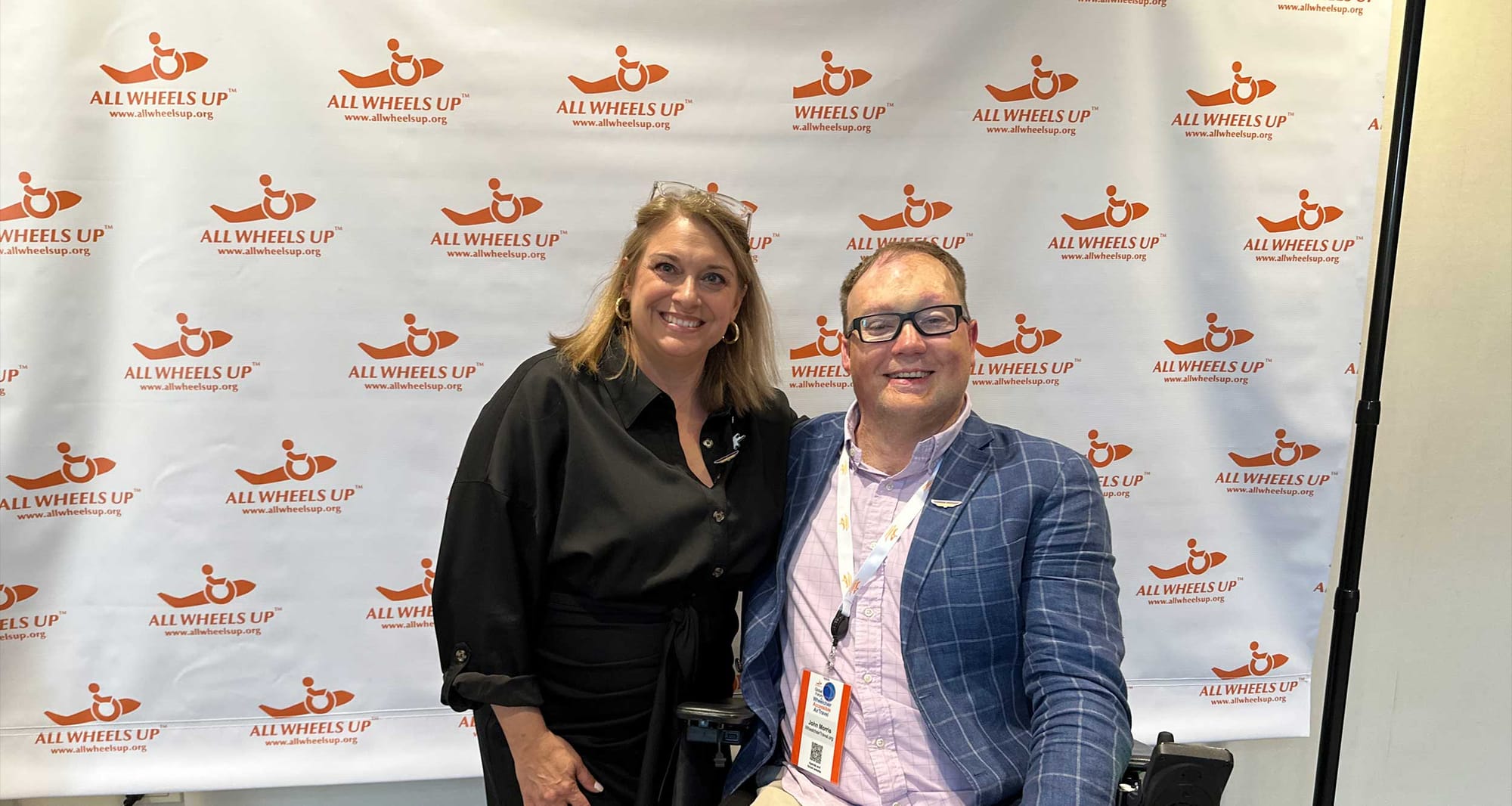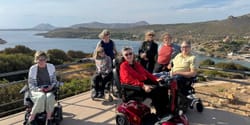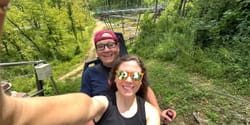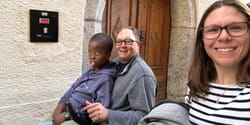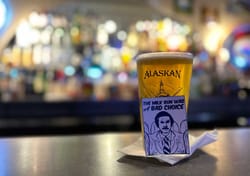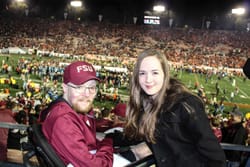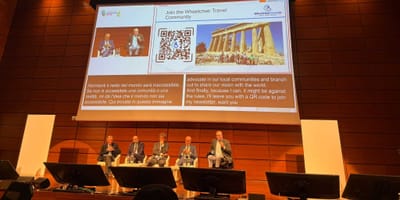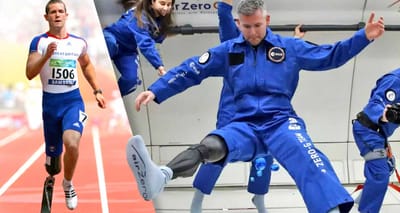All Wheels Up hosted its fourth annual Global Forum on Wheelchair Accessible Air Travel, which brought together 150+ representatives from airlines, airplane manufacturers, interior design firms, disability organizations and the federal government. There was even a Wheelchair Travel reader in attendance!
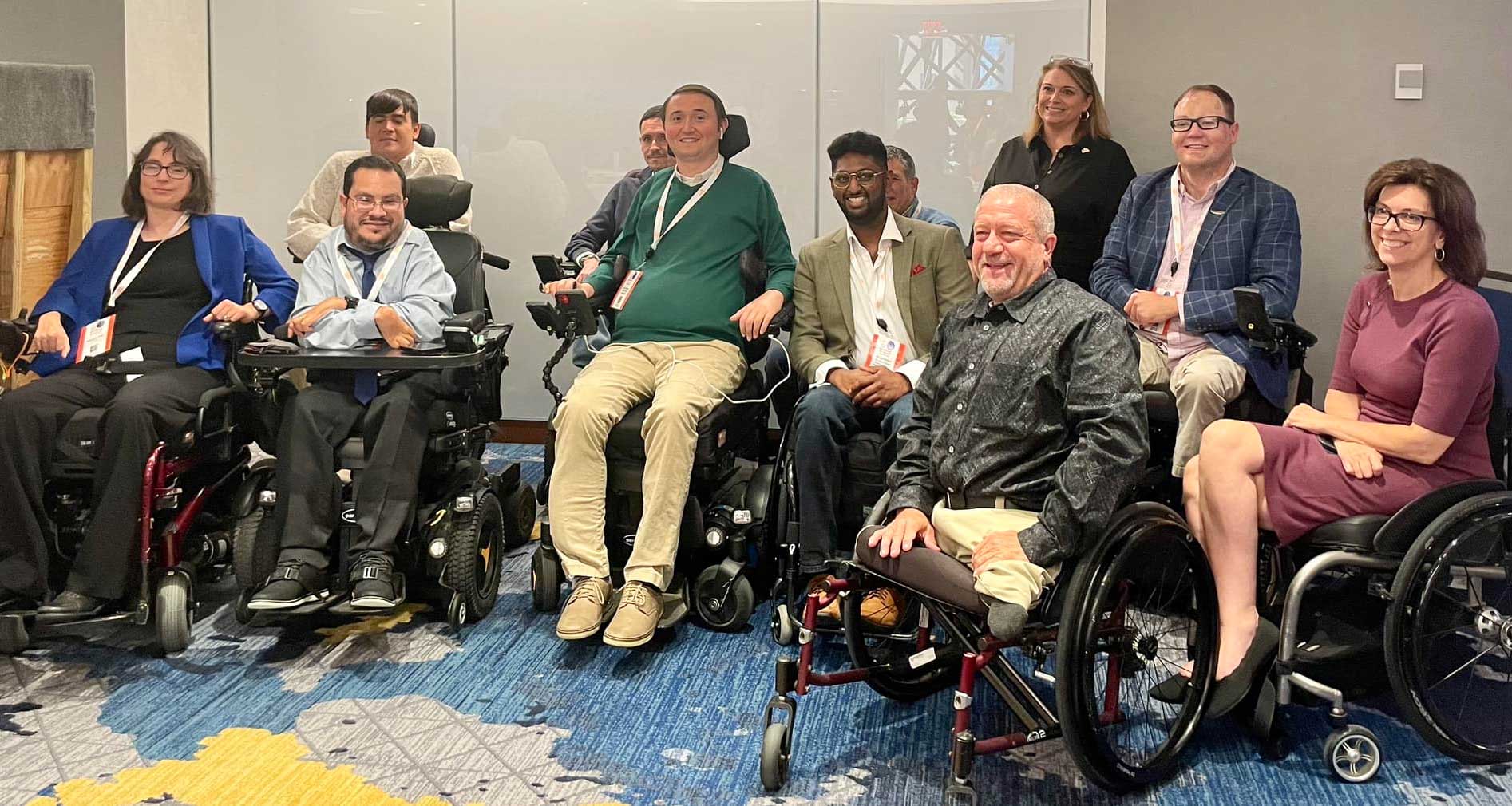
The forum is designed to be a safe space for important and challenging conversations to take place — members of the media are not invited, and so I attended not as a blogger or journalist, but rather as a disabled air traveler with a breadth of travel experience that is rivaled by few. As a result, this recap focuses on overarching themes, rather than a detailed play-by-play of what was said and by whom.
What is All Wheels Up?
All Wheels Up was founded in 2011 by Michele Erwin after she took a vacation to Walt Disney World with her son Greyson who has SMA. After experiencing the difficulties of traveling with a wheelchair, she knew something needed to be done and sought to crash test wheelchairs to prove that they could be safely secured in the aircraft cabin.
The organization’s crash tests revealed that existing wheelchair restraints from Q’Straint could exceed the FAA 16G securement standards. All Wheels Up partnered with regulators, airlines, airplane manufacturers and congress to advocate for making airplanes wheelchair accessible.
Erwin and her board seek a solution that will allow wheelchair users to fly with dignity in their own mobility devices, independently maneuvering themselves onto the aircraft and to an onboard wheelchair securement space.
Remarks by USDOT Secretary Pete Buttigieg
Pete Buttigieg, Secretary of the U.S. Department of Transportation, recorded a video that was shared with attendees at the forum.
In the video, Secretary Pete reiterated earlier comments, in which he said that sitting in one’s own wheelchair is “something that’s already possible on other major forms of transportation, and it’s time to make it a reality for aviation.”
The secretary admitted that the process to achieve those goals is likely to take longer than we would like, however he noted that the DOT has been clear about its goal as represented by statements like these. He encouraged continued advocacy from the disability community and his comments were well received in the room.
Remarks by U.S. Senator Tammy Duckworth
U.S. Senator Tammy Duckworth from Illinois made an appearance in-person, and provided an important perspective as she herself is an amputee and wheelchair user. A frequent air traveler, the Senator noted that there is an airline she won’t fly due to repeated damage to her wheelchair. No, she would not name the carrier!
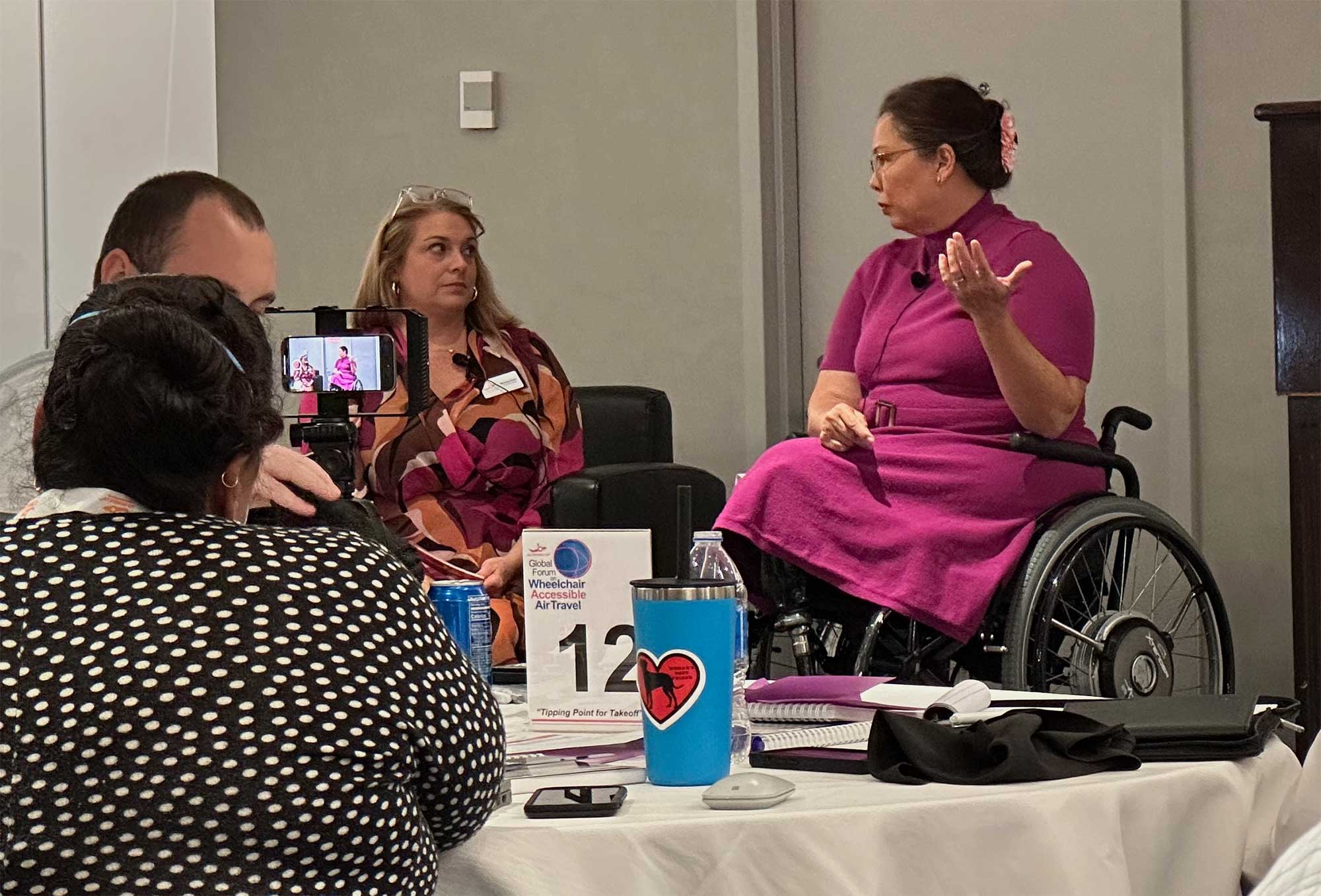
She understood the desire for additional regulation from the community, and pointed to work she has done through the FAA Reauthorization Act and her sponsorship of the Air Carrier Access Amendments Act, the latter of which has failed to pass Congress. The 2023 FAA Reauthorization, when passed, will direct the DOT to conduct additional research on wheelchair spaces in the cabin, while mandating enhanced training procedures for airline staff who assist passengers with boarding or load mobility equipment.
The Senator pointed out that she must consider more than the needs of the community — namely, that the most effective way to move the wheelchair space forward is through demonstrating a business case for airlines to invest in the accommodation. Due to recent investments made by Delta Flight Products in the Air4All wheelchair securement space, it would seem that carriers have already recognized the business case for improved accessibility. Regulators should move forward rapidly to set reasonable standards for these spaces.
Wheelchair Securement Spaces in the Aircraft Cabin
Multiple aircraft interior manufacturers presented at the All Wheels Up forum, including Delta Flight Products and Molon Labe. Both companies have invested heavily in accessible travel solutions, most notably DFP, which brought their Air4All prototype to the event.
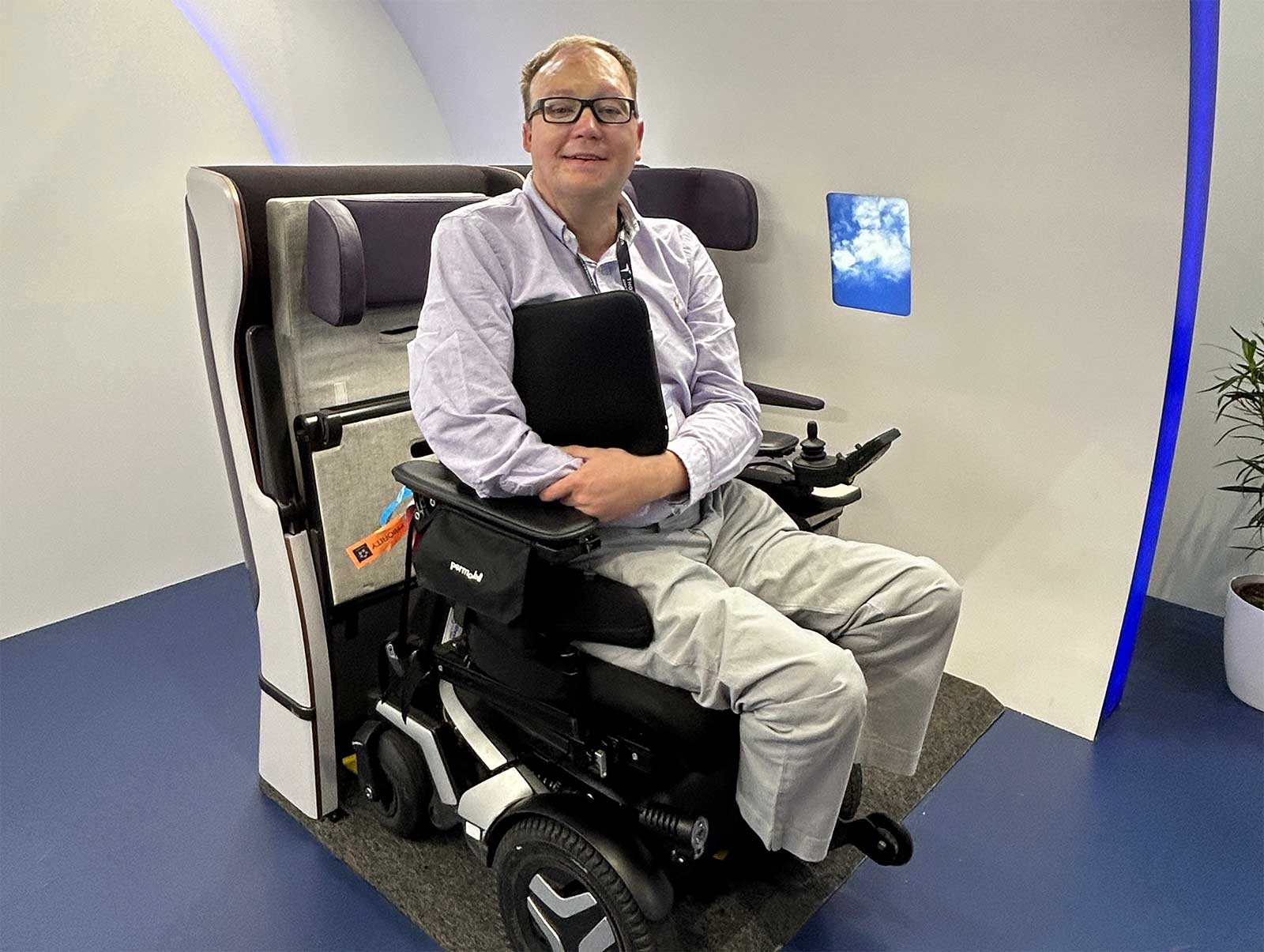
DFP laid out a timeline for Air4All that was perhaps a bit more aggressive than the one shared with me in Hamburg, Germany earlier this year — initially thought to be three years until the device would appear on an aircraft, DFP believes they can make that a reality in 2025.
This of course does not mean you will be flying in a wheelchair securement space two years from now — Delta Air Lines has made no commitment to install the solution on its aircraft, but the airline did recently tout the prototype as one of “the ways Delta is making travel more accessible.” Certainly, by the end of this decade, disabled travelers should hold the airline accountable if it doesn’t deliver a wheelchair securement space on at least some of its commercial flights.
Student-led Research and Prototypes
Students from the engineering schools at the University of Michigan and Virginia Tech have invested time in researching wheelchair securement spaces on airplanes. They presented their work at the All Wheels Up forum, and some groups have received input from industry partners including Boeing and Collins Aerospace.
The group from the University of Michigan, represented at the forum by students Samuel Opinsky and Honor Robertson, and working with the guidance of Collins Aerospace, shared their project mission statement:
In 2023-2024 we will build, test, and implement a floor plinth/locking mechanism integration system compatible with a Boeing 737-800 that has low effect on airlines. This integration will be re-built, and undergo a Pitch and Roll demonstration, as well as a static test. The integration will include pre-existing SCHROTH locking technology and be tested in partnership with MGA.
The work of these students is highly technical and demonstrates the complexity of achieving certification for novel solutions. Some of the challenges faced by students can be bypassed using the modern technology and resources available to major industry players like Delta Flight Products, but the students’ innovative ideas should not be overlooked.
What’s Next and Final Thoughts
Tremendous progress has been made in the design, development and testing of technologies to bring a wheelchair securement space to commercial airliners. The threat of regulation has encouraged investment, and multiple aircraft interior manufacturers aim to gain a “first mover” advantage. Multiple prototypes are expected to debut in short order, and there will no doubt be competition in this space. That’s great for wheelchair users, but the USDOT must not delay in erecting guardrails — a standard for what counts as a truly accessible wheelchair securement space must be set for aircraft, just as it was for buses, taxis and trains. Without a clear standard, the size of the wheelchair securement space could be too small to accommodate many wheelchairs, including those used by travelers who would benefit the most from traveling in their own mobility devices.
Join my Accessible Travel Chat with the All Wheels Up team!
If you’d like to learn more about the work All Wheels Up is doing to make air travel more accessible, join me for an Accessible Travel Chat with AWU President Michele Erwin and AWU Vice President Alan Chaulet on Friday, October 13 at 11:00 a.m. Eastern Time. To register for the live chat on Zoom, please sign-up via the Accessible Travel Chat registration form.

